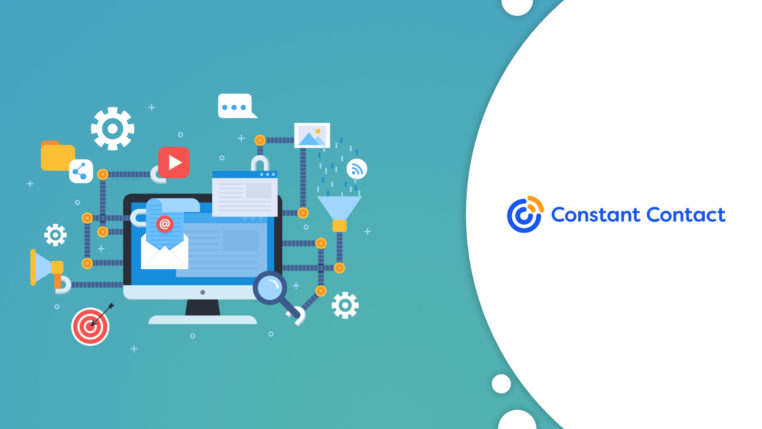10 Email Marketing Steps to Build Your Brand

Table of Contents
10 Email Marketing Steps to Build Your Brand
Email marketing is a branch of digital marketing that involves using emails to convince subscribers to take a specific action or step. Also, email marketers send commercial emails with ads about products or services to individuals who have permission to receive these email communications.
Email marketing is highly beneficial to businesses. 64% of small businesses use email marketing to reach their customers. It comes with various advantages, such as creating personalized content, increased brand credibility, better brand recognition, boosting sales, and many others.
This article will address ten email marketing steps that will lead to growth in your brand. Also, the article will provide you with software that is proven to improve your email marketing strategy.
10 Email marketing steps to build your brand
Email marketing, when done right, attracts a lot of benefits to your brand. These ten email marketing steps will build your brand, increase your revenue, and boost your customer base.
1. Carefully build your email list
An email list is a list or collection of all the email addresses your business has gathered from visitors or customers to your website. Those on your email list would like to receive information, updates, discounts, and other information about your brand through emails.
One crucial step to take when using email marketing to build your brand is to create your email list. In the brand management process, you need to ensure the promotion of your brand or goods reaches your target audience or market; else, all your efforts might be futile. Your target audience is those for whom your products or service are specifically designed.
So, when developing your email list, you have to scrutinize the email addresses you add to your list. There are brand management solutions and software such as Attest and Brand24 that help you develop strategies to make your brand’s marketing efforts successful.
Before including anyone on your email list, you should note that you must ask for permission, as no one likes having an unwanted “guest” in their emails. It is needful for you to keep your email list updated as well.
Keep track of those who have unsubscribed from your emails and those who are not part of your target audience. This will ensure you provide content for the right people. Cleaning out your email list also helps you to protect your sensitive data.
2. Choose the right subject lines
Subject lines are the first things your audience sees before opening your emails. If you do not have a subject line that convinces your subscribers to read your message, they won’t have the opportunity to know about your brand, and the growth of your business may be affected. This makes your subject line one of the most important lines of text in your whole email.
Your subject line could catch your readers’ attention by asking for a compelling message, including a deadline to boost urgency, tease your message, etc. It should make a good impression on your readers, and they won’t be able to resist opening it, but if it is bland, they will skip over your email and “die” in their inbox.
But when you follow these tips for writing your subject line, you can be sure to write subject lines that will always get your audience to open your emails.
- Keep your subject line short and sweet
- Research and use relevant keywords
- Avoid the ‘no-reply’ sender name
- Personalize your subject lines
- Start with action-oriented verbs
- Eliminate filler words
3. Personalize your emails
Another practical email marketing step to adopt when building your brand is personalizing your emails. Personalization in email marketing is when you use your subscribers’ data to tailor your emails for each receiver.
The data you use for email personalization can be the subscriber’s name, birthday, shopping preferences, etc. Besides making your subscribers feel like VIPs, personalizing your emails increases open rates, drives engagement, and increases your revenue.
Email personalization goes beyond addressing your subscriber by name. Strategies you can employ for email personalization include segmenting your email list, checking browsing history, using your subject line in the personalization, providing tips and tricks to use your products better, etc.
4. Write engaging and informative content
After getting the attention of your subscribers through the subject line, you need to ensure the emails are worth their time. Once your subscribers open the email, they need to get valuable and informative content. If this is not the case, your audience will not be inspired to open your subsequent emails.
Your emails need to be short but packed with information that will benefit your audience. Also, your emails have to be engaging. Email engagement is measured by how well subscribers interact with your email marketing campaigns. So, for your email to be interesting, it should offer real value to the subscribers, be conversational, and be personalized.
5. Ensure emails are flawless across all devices
Thanks to technology, your subscribers have various devices they can access your emails from. For instance, your audience may use laptops (Windows, MacOS, etc.), tablets, and mobile devices (iOS, Android OS) to read your emails. Because of this, you should ensure that your audience can access your emails from all these devices.
Also, it would help if you avoided discrimination against one or more of these devices. For example, some businesses place more premium on laptop users and only focus on making their mails perfect on this device while neglecting mobile phones. So, the quality of your emails should be uniform on all devices.
6. Integrate social media marketing into emails
Social media marketing is another type of digital marketing and it refers to the use of social media platforms and networks to market your company’s products or services. Integrating your social media marketing efforts with email marketing is sure to boost your results.
For instance, you can include your social media accounts in your emails and encourage your readers to follow and engage with those accounts. Also, you can include clickable links leading to your social media pages. Some of your subscribers might be more comfortable interacting with your business on social media, so make that option available.
7. Optimize your emails for SEO
Search Engine Optimization or SEO refers to the oracle of refining your website to rank higher on a search engine’s results page, which will lead to you receiving more traffic. Although email marketing is not directly linked to influencing your SEO, there is still a connection.
When you have an effective email marketing strategy, it will lead to more traffic to your website. When you have more traffic and a reduced bounce rate, Google and other search engines will notice, boosting your SEO ranking. These guidelines will help you optimize your emails for SEO:
- Use relevant keywords in your subject line
- Include target keywords in your email content
- Use H1 and H2 tags
- Personalize your email content
- Conduct tests to try out SEO keywords
8. Insert compelling CTAs
A call to action (CTA) is a term used in marketing to refer to the action that a marketer wants the customer to take. A compelling CTA will help to eliminate decision fatigue and give meaning to your content. This is why you must include CTAs in your emails.
Your CTA could be a button or a hyperlinked line of text in your emails. What matters is that it drives your consumers to carry out your desired action. Examples of CTAs include:
- Buy Now
- Read more
- Download Now
- Subscribe now
- Click to learn more
9. Set SMART goals
SMART marketing goals are a guide for efficient and successful goal setting. The goals you set for your email marketing have to be Specific, Measurable, Attainable, Realistic, and Timely. The goals you set will guide you in making the decisions concerning your email marketing.
Also, these goals will help you measure the success or failure of your email marketing efforts. SMART goals give you, as a marketer, a sense of direction, vision, and purpose. You must ensure you use these goals as a reference point when creating your campaign.
10. Use A/B tests for your emails
Testing your emails before sending them out is an actionable practice guaranteed to give you satisfactory results. A/B testing or split testing is a marketing experiment that ensures you send the best marketing content to your target audience.
In A/B testing, you create two versions of your email, split a small portion of your audience into two groups, and send each email version to a different group. Then you choose the email variation that has the best results.
The benefit of split testing is that you can test any email element. For example, you could conduct A/B testing for your subject line or CTA to determine which will prompt the audience to act.
Best email marketing software for your brand
Managing email marketing campaigns can be a bit challenging. However, these email marketing tools make the process less complicated but rewarding.
- MailChimp
With MailChimp, you can turn your emails into revenue. This platform helps over 13 million businesses to create and send engaging emails that will reach the right people, build better relationships, and help with their growth. Your business can be one of them.
MailChimp is an email marketing software that provides you with tools to ensure you get the most out of your email marketing strategy. Also, this software helps your brand stand out by providing you with email templates to create beautiful emails.
MailChimp helps businesses draw their customers in with the right subject lines with the Subject Line Helper feature. In addition, email marketing automation is easier with MailChimp by sending emails based on your customers’ behaviors and interactions. This allows you to deliver better experiences and increase engagement.
- Hubspot
HubSpot is a software that provides businesses of all sizes with various marketing tools to make their digital marketing strategies effective. HubSpot’s email marketing tools help you create, personalize, and optimize your marketing emails easily without designers.
Your emails will be professionally crafted and displayed perfectly across any device with HubSpot. Also, you can decide to choose from the dozens of goal-based email templates that are proven to convert your subscribers to sales. You can then customize these templates using the drag-and-drop editor to fit in with your brand.
Lastly, HubSpot ensures you are always in the know concerning your email marketing campaigns with free email tracking software. This email tracker lets you know that second a lead opens your emails and when to send a perfectly timed follow-up mail. This allows you close deals faster and increases your revenue.
- ActiveCampaign
Personalized emails help businesses sell more because they resonate more with subscribers. With a platform like ActiveCampaign, you get all the tools you need to create a comprehensive email marketing program that helps to keep people engaged and convert them into lifelong customers.
There are serval types of emails you will need to send to customers throughout their journey with your business. ActiveCampaign helps you draft the perfect emails, no matter the style or occasion. For example, there are welcome emails, broadcast emails, triggered emails, targeted emails, scheduled emails, etc.
If you find yourself in a situation where you need to send different messages to different audiences, ActiveCampaign ensures you send exactly what your subscribers want to see. This platform helps you send targeted emails to the right people.
Conclusion
In conclusion, email marketing is one of the most valuable forms of digital marketing to businesses today. The email marketing steps discussed in this article will help you build your brand. In addition to the tools mentioned in the article, these steps will help increase your awareness, grow your customers, and boost your revenue.
Share this article



